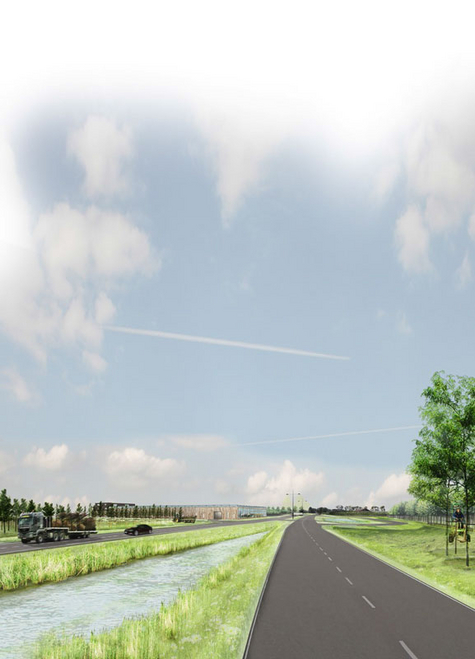Mathé van Kranenburg
- Course
- Landscape Architecture
- Class
- 2015
Diepgeworteld
The graduation project ‘Deep-rooted’ represents the relationship between humans with the eastern Betuwe region. The image of the Betuwe region as orchard of the Netherlands is well known, but the reality of large-scale infrastructure and unsuitable land uses has now almost outstripped that. The project focuses on the avenue tree growers who are developing the eastern Betuwe region into an attractive production landscape with recreational qualities, and at the same time are continuing to develop avenue tree cultivation into a future-proof form of agriculture. A better balance arises between the important landscape and economic incentives for avenue tree cultivation, and a livable region for inhabitant and recreational user. The growth of avenue tree cultivation and the recreational use has restored the image of the Betuwe region.
The strategy to develop both cultivation and recreation is based on the avenue tree cultivation and the avenue tree growers. The growers, many family companies with strong roots in the region, are the active participants who use, form, maintain and experience the landscape. With an area of production of approximately 1,500 ha, the current region of the eastern Betuwe is the most important production area for avenue trees in the Netherlands, but also in Europe. By controlling the processes of cultivation and incorporating future developments, the landscape will be shaped to the avenue tree cultivation, but in a way in which spatial issues like nature, energy, water, accommodation and recreation are taken into account.
The main intervention for the area is the Laanbomenlint (Avenue tree ribbon), a new infrastructure that serves as the basis for restructuring and driver for new developments. With respect to the area, it functions as an infrastructural connection with the world, a shop window for the cultivation and part of the sustainable area development. The ribbon is a combination of road/dyke/water, which is characteristic for the area and from the road it offers an impressive view and perception of the avenue tree cultivation as unique form of agriculture. The ribbon lies at the centre of the avenue tree zone, the area on the levees where avenue tree cultivation has traditionally occurred, and functions here as a stepping stone for an increase in scale and technological development. This region offers a perception of cultivation on a new scale and new extra large farmlands are developing here that are placing the region on the map as an example to avenue tree nurseries worldwide.
An area of transition is located around the avenue tree zone, a small-scale and mixed area that is a continuation of the existing landscape and land use. This serves as an intermediary stage from avenue tree cultivation to other uses, and there is room in the region for existing functions and grounds to specialise, expand and/or downsize. Newly available grounds in turn offer space once again for the growth of the avenue tree cultivation. The Linge, the Netherlands’ longest river, nothing more than a discharge canal here, runs through the heart of the region. As a result of the growth of the cultivation, the river Linge has developed into a park zone in which recreational functions, cultural history, nature and water have been given the space to grow. The Linge park is being developed and completed by the avenue tree growers who can place their water storage here and where they can find a place for remaining and special trees. With these unique elements, the recreational experience in the region seamlessly blends in with the Betuwe region’s image of orchards, nature and small-scale recreation.
Commission members: Nikol DIetz (mentor), Bruno Doedens, Pieter Veen. Additional members for the examination: Roel Wolters, Marie-Laure Hoedemakers.





